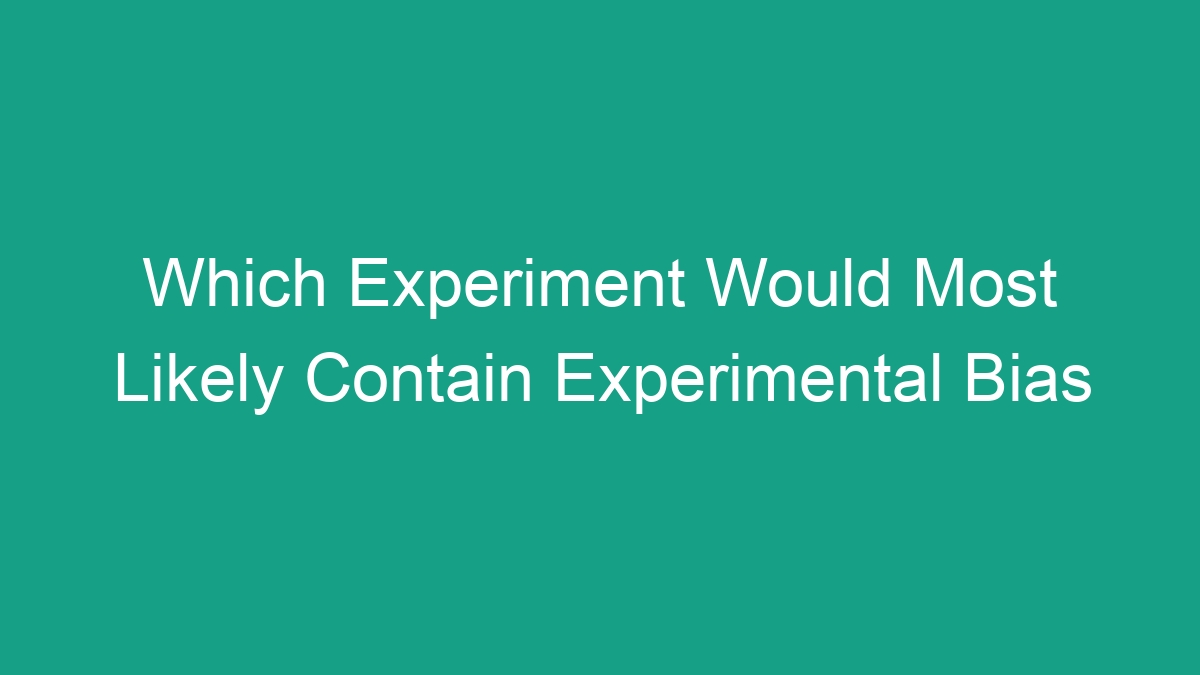
Experimental bias is a common issue in scientific research that can have a significant impact on the validity of study findings. Experimental bias occurs when researchers unintentionally skew the results of an experiment in a way that favors their hypotheses or expectations. In this article, we will explore the different types of experiments that are most likely to contain experimental bias and discuss strategies for minimizing bias in research.
Types of Experiments Prone to Experimental Bias
Not all experiments are equally susceptible to bias. Some types of experiments inherently lend themselves to unintentional bias due to their design or methodology. Let’s take a closer look at the types of experiments that are most likely to contain experimental bias:
- Non-blind or Open Label Studies: In non-blind or open label studies, both the researchers and the participants are aware of the treatments being administered. This lack of blinding can introduce bias as researchers may inadvertently influence the behavior or responses of participants based on their own expectations.
- Small Sample Size Studies: Experiments with small sample sizes have a higher risk of bias as the findings may be less representative of the larger population. Small sample sizes also make it easier for chance variations or confounding factors to influence the results.
- Uncontrolled Observational Studies: Studies that rely solely on observational data without implementing control groups or randomization techniques are prone to bias. Without controlling for potential confounding variables, researchers may draw incorrect conclusions from the data.
Strategies to Minimize Experimental Bias
While it may be challenging to completely eliminate bias from research, there are several strategies that researchers can use to minimize its impact on experimental results:
- Randomization: Randomly assigning participants to different treatment groups can help minimize bias by ensuring that confounding variables are equally distributed across groups.
- Double-Blinding: In double-blind studies, both the researchers and the participants are unaware of who is receiving the treatment and who is receiving a placebo. This can help prevent bias from affecting the results.
- Control Groups: Including control groups in experiments allows researchers to compare the effects of the treatment against a baseline, helping to account for confounding variables and reduce bias.
- Peer Review: Having research findings reviewed by peers before publication can help identify and address potential sources of bias in the study design or analysis.
- Transparent Reporting: Transparently reporting the methodology and findings of a study can help readers assess the potential for bias and interpret the results more accurately.
Examples of Studies Prone to Experimental Bias
Let’s consider some specific examples of studies that may be particularly susceptible to experimental bias:
| Study Type | Potential Bias |
|---|---|
| Survey-based Studies | Response bias due to leading questions or interviewer influence |
| Cohort Studies | Loss to follow-up leading to selection bias |
| Case-control Studies | Recall bias in self-reported exposure and outcome data |
Conclusion
Experimental bias is a pervasive challenge in scientific research, but it can be mitigated through thoughtful study design, rigorous methodology, and transparent reporting. By understanding the types of experiments that are most likely to contain bias and implementing strategies to minimize its impact, researchers can enhance the validity and reliability of their findings. Moving forward, it is important for scientists to remain vigilant in addressing potential sources of bias and upholding the integrity of their research.



